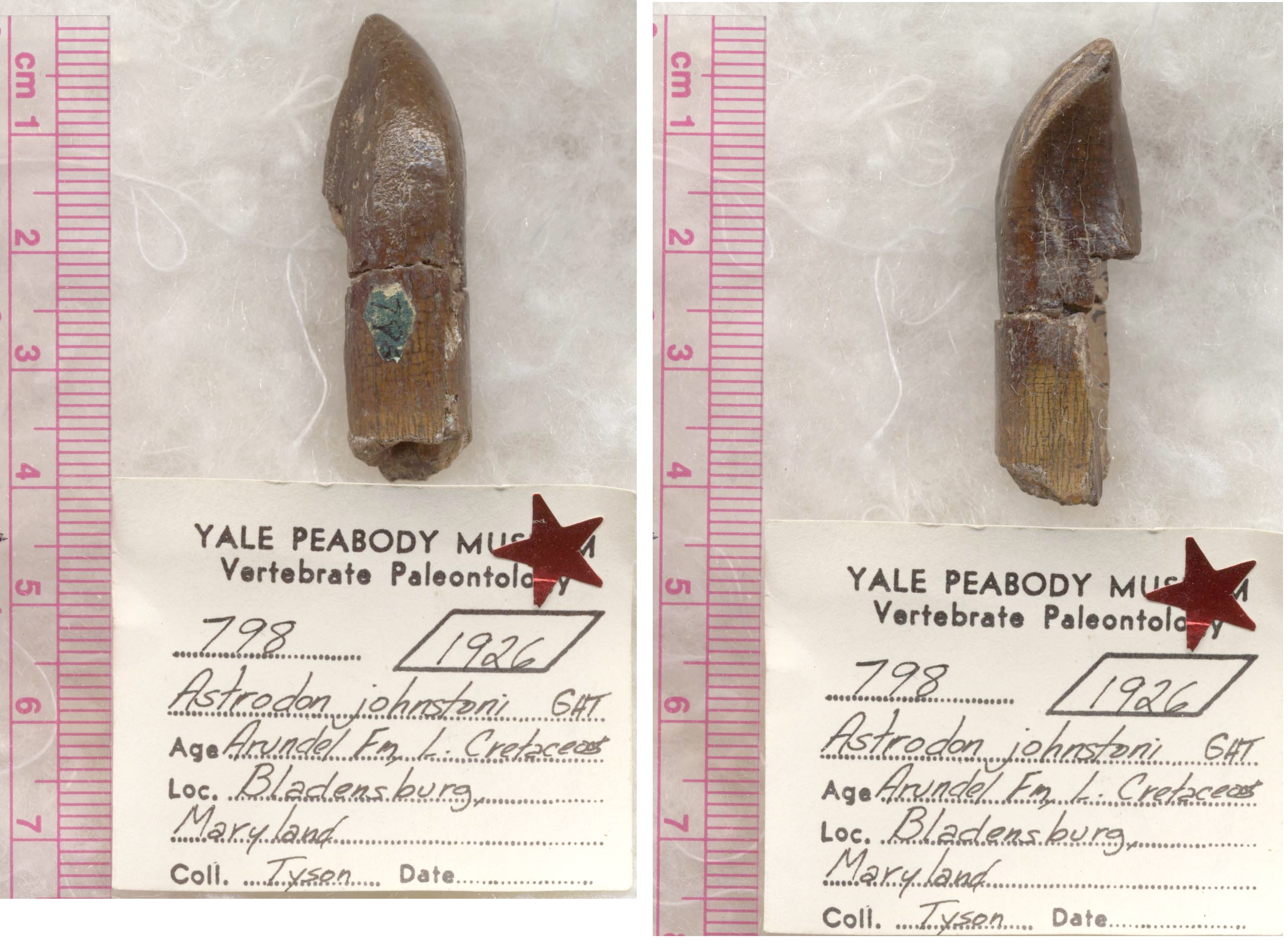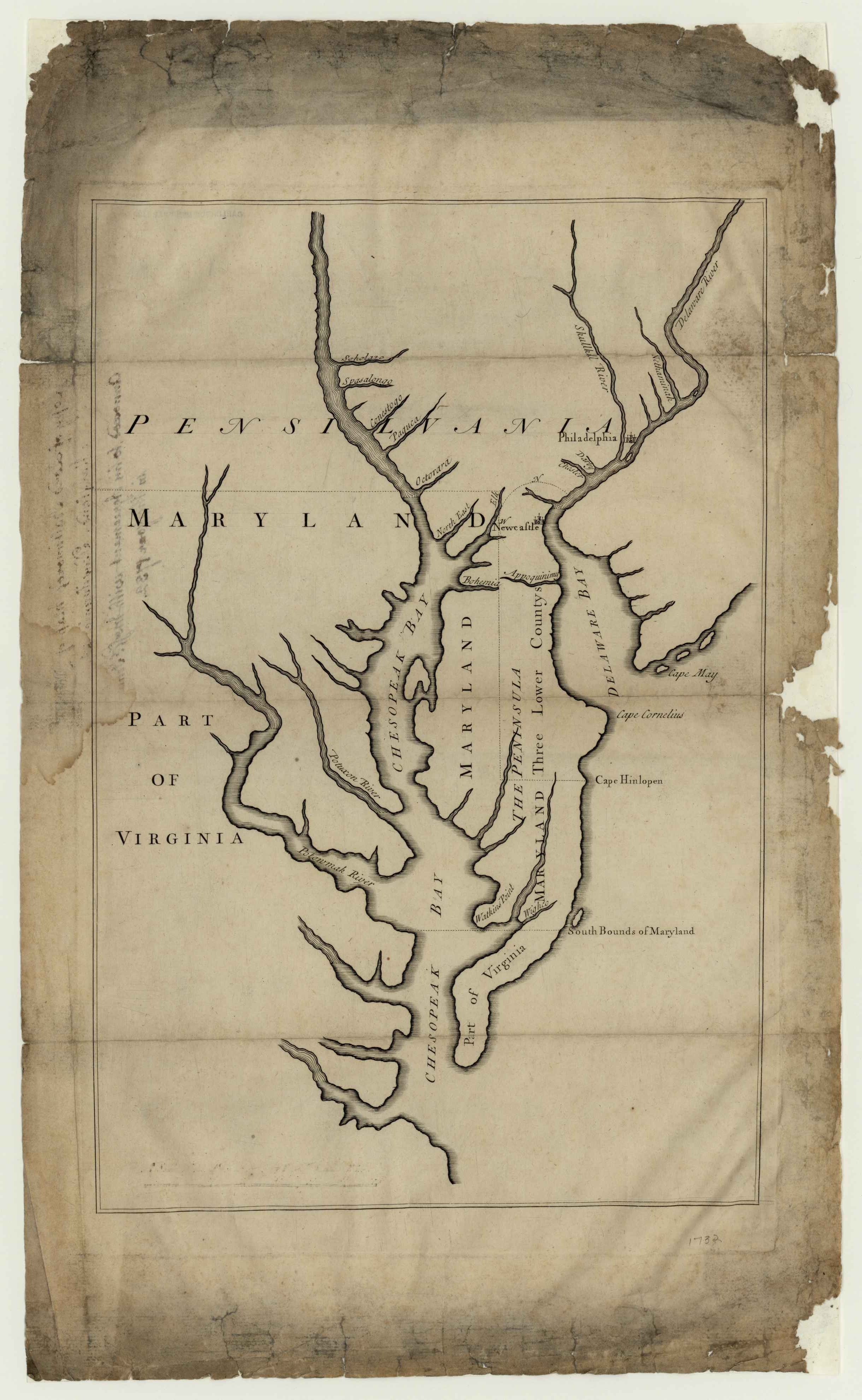|
Astrodon
''Astrodon'' is a genus of large herbivorous sauropod dinosaur, measuring in length, in height and in body mass. It lived in what is now the eastern United States during the Early Cretaceous period, and fossils have been found in the Arundel Formation, which has been dated through palynomorphs to the Albian about 112 to 110 million years ago. Discovery and species Two dinosaur teeth were received in late November 1858 by chemist Philip Thomas Tyson from John D. Latchford. They had been found in Latchford's open iron ore pit in the Arundel Formation at Swampoodle near Muirkirk in Prince George's County, Maryland. Tyson let them be studied by the dentist Christopher Johnston, professor at the Baltimore Dental College, who cut one tooth in half and thereby discovered a characteristic star-formed cross-section. Johnston named ''Astrodon'' in 1859. However, he did not attach a specific epithet, so Joseph Leidy is credited with naming ''Astrodon johnstoni'' (the type species) ... [...More Info...] [...Related Items...] OR: [Wikipedia] [Google] [Baidu] |
Arundel Formation
The Arundel Formation, also known as the Arundel Clay, is a clay-rich sedimentary geological formation, rock formation, within the Potomac Group, found in Maryland of the United States of America. It dates to the Early Cretaceous, and is of late Aptian or (more likely) early Albian age. This rock unit had been economically important as a source of iron ore, but is now more notable for its dinosaur fossils. It is named for Anne Arundel County, Maryland. It consists of clay lenses within depressions in the upper part of the Patuxent Formation that may represent Oxbow lake, oxbow swamp facies. The Arundel Formation contains a high number of terrestrial fauna, indicating that it was deposited in a freshwater fluvial environment, likely representing slow-moving river channels and oxbows. The Arundel Formation is the only major source for Early Cretaceous terrestrial vertebrates in eastern North America, and provides the best record of the dinosaurs that inhabited the region at the t ... [...More Info...] [...Related Items...] OR: [Wikipedia] [Google] [Baidu] |
Brachiosaurus
''Brachiosaurus'' () is a genus of sauropod dinosaur that lived in North America during the Late Jurassic, about . It was first Species description, described by American paleontologist Elmer S. Riggs in 1903 in paleontology, 1903 from fossils found in the Colorado River valley in western Colorado, United States. Riggs named the dinosaur ''Brachiosaurus altithorax''; the Generic name (biology), generic name is Ancient Greek, Greek for "arm lizard", in reference to its proportionately long arms, and the specific name (zoology), specific name means "deep chest". ''Brachiosaurus'' is estimated to have been between long; body mass estimates of the subadult holotype specimen range from . It had a disproportionately long neck, small skull, and large overall size, all of which are typical for sauropods. Atypically, ''Brachiosaurus'' had longer forelimbs than hindlimbs, which resulted in a steeply inclined Torso, trunk, and a proportionally shorter tail. ''Brachiosaurus'' is the nam ... [...More Info...] [...Related Items...] OR: [Wikipedia] [Google] [Baidu] |
Christopher Johnston (1822-1891)
Christopher Johnston (September 27, 1822–October 12, 1891) was an American surgeon and professor of anatomy. Among his contributions was the anatomical description of the antenna of mosquitoes and an organ that detects vibration that is now known as Johnston's organ. His son Christopher Johnston (Assyriologist), Christopher Johnston (1856–1914) became an eminent Assyriologist. Life and work Johnston was born in was born in Baltimore to Christopher and Elizabeth Gates, daughter of Maj. Lemuel Gates. His paternal grandfather had moved from Scotland to Baltimore in 1766. When his father died in 1835, he was adopted by an aunt Mariah S. Johnston. He was educated at St. Mary's Seminary and University, St. Mary's College in Baltimore and later studied medicine under Dr. John Buckler. He received an MD in 1844 from University of Maryland, College Park, Maryland University. Along with Charles Frick, David Stewart and Elisha W. Theobald he was involved in founding the Maryland Medical ... [...More Info...] [...Related Items...] OR: [Wikipedia] [Google] [Baidu] |
Prince George's County
Prince George's County (often shortened to PG County or PG) is located in the U.S. state of Maryland bordering the eastern portion of Washington, D.C. As of the 2020 U.S. census, the population was 967,201, making it the second-most populous county in Maryland, behind neighboring Montgomery County. The 2020 census counted an increase of nearly 104,000 in the previous ten years. Its county seat is Upper Marlboro. It is the most populous African American-majority county in the United States, as well as the second most affluent behind neighboring Charles County. The county is part of the Capital region of the state, though portions of the county are considered to be in Southern Maryland. The county also hosts many federal governmental facilities, such as Joint Base Andrews and the United States Census Bureau headquarters. Etymology The official name of the county, as specified in the county's charter, is "Prince George's County, Maryland". The county is named after Prince G ... [...More Info...] [...Related Items...] OR: [Wikipedia] [Google] [Baidu] |
Maryland
Maryland ( ) is a U.S. state, state in the Mid-Atlantic (United States), Mid-Atlantic region of the United States. It borders the states of Virginia to its south, West Virginia to its west, Pennsylvania to its north, and Delaware to its east, as well as with the Atlantic Ocean to its east, and the national capital and federal district of Washington, D.C. to the southwest. With a total area of , Maryland is the List of U.S. states and territories by area, ninth-smallest state by land area, and its population of 6,177,224 ranks it the List of U.S. states and territories by population, 18th-most populous state and the List of states and territories of the United States by population density, fifth-most densely populated. Maryland's capital city is Annapolis, Maryland, Annapolis, and the state's most populous city is Baltimore. Maryland's coastline was first explored by Europeans in the 16th century. Prior to that, it was inhabited by several Native Americans in the United States ... [...More Info...] [...Related Items...] OR: [Wikipedia] [Google] [Baidu] |
Camarasaurus
''Camarasaurus'' ( ) is a genus of sauropod dinosaur that lived in North America during the Late Jurassic period. Its fossil remains have been found in the Morrison Formation, dating to the Kimmeridgian and Tithonian ages of the Jurassic, between 155 and 145 million years ago (mya). ''Camarasaurus'' presented a distinctive cranial profile of a blunt snout and an arched skull that was remarkably square, typical of basal macronarians. The generic name means "chambered lizard", referring to the hollow chambers, known as pleurocoels, in its cervical vertebrae (Greek (') meaning "vaulted chamber", or anything with an arched cover, and (') meaning "lizard"). ''Camarasaurus'' contains four species that are commonly recognized as valid: '' Camarasaurus grandis'', '' Camarasaurus lentus'', '' Camarasaurus lewisi'', and '' Camarasaurus supremus''. ''C. supremus'', the type species, is the largest and geologically youngest of the four. ''Camarasaurus'' is the type genus of Camaras ... [...More Info...] [...Related Items...] OR: [Wikipedia] [Google] [Baidu] |
Chimera (paleontology)
In paleontology, a chimera is a fossil that was reconstructed with elements coming from more than a single species or genus of animal. In other words, they are mistakes or sometimes hoaxes made by paleontologists, putting together parts that do not come from the same organism. List of paleontological chimeras * "Archaeoraptor" * '' Avalonianus'' * '' Bagaraatan'' * '' Beipiaognathus''? * ''Dakotaraptor''? * '' Dalianraptor''? * '' Dravidosaurus'' * '' Eocarcharia'' * ''Kryptops''? * '' Kootenichela''? * '' Lametasaurus''? * '' Luchibang'' * '' Ornithopsis hulkei'' * Piltdown Man * '' Polacanthoides''? * '' Precursor''? * ''Protoavis'' * ''Saurophaganax?'' * "Teihivenator" * ''"Tylosaurus" capensis'' * '' Ultrasauros'' * ''Xenodens ''Xenodens'' (from Greek language, Greek and Latin for "strange tooth") is a potentially Nomen dubium, dubious extinct genus of marine lizard belonging to the mosasaur family. It contains a single species, ''X. calminechari'' (From Arabic کال� .. ... [...More Info...] [...Related Items...] OR: [Wikipedia] [Google] [Baidu] |
Nomen Dubium
In binomial nomenclature, a ''nomen dubium'' (Latin for "doubtful name", plural ''nomina dubia'') is a scientific name that is of unknown or doubtful application. Zoology In case of a ''nomen dubium,'' it may be impossible to determine whether a specimen belongs to that group or not. This may happen if the original type series (i. e. holotype, isotype, syntype or paratype) is lost or destroyed. The zoological and botanical codes allow for a new type specimen, or neotype, to be chosen in this case. A name may also be considered a ''nomen dubium'' if its name-bearing type is fragmentary or lacking important diagnostic features (this is often the case for species known only as fossils). To preserve stability of names, the ''International Code of Zoological Nomenclature'' allows a new type specimen, or neotype, to be chosen for a ''nomen dubium'' in this case. 75.5. Replacement of unidentifiable name-bearing type by a neotype. When an author considers that the taxonomic identity ... [...More Info...] [...Related Items...] OR: [Wikipedia] [Google] [Baidu] |
Autapomorphy
In phylogenetics, an autapomorphy is a distinctive feature, known as a Synapomorphy, derived trait, that is unique to a given taxon. That is, it is found only in one taxon, but not found in any others or Outgroup (cladistics), outgroup taxa, not even those most closely related to the focal taxon (which may be a species, family (biology), family or in general any clade). It can therefore be considered as an apomorphy in relation to a single taxon. The word ''autapomorphy'', introduced in 1950 by German entomology, entomologist Willi Hennig, is derived from the Greek language, Greek words αὐτός, ''autos'' "self"; ἀπό, ''apo'' "away from"; and μορφή, ''morphḗ'' = "shape". Discussion Because autapomorphies are only present in a single taxon, they do not convey information about relationship. Therefore, autapomorphies are not useful to infer phylogenetic relationships. However, autapomorphy, like synapomorphy and plesiomorphy is a relative concept depending on the ta ... [...More Info...] [...Related Items...] OR: [Wikipedia] [Google] [Baidu] |
Subgenus
In biology, a subgenus ( subgenera) is a taxonomic rank directly below genus. In the International Code of Zoological Nomenclature, a subgeneric name can be used independently or included in a species name, in parentheses, placed between the generic name and the specific epithet: e.g. the tiger cowry of the Indo-Pacific, ''Cypraea'' (''Cypraea'') ''tigris'' Linnaeus, which belongs to the subgenus ''Cypraea'' of the genus ''Cypraea''. However, it is not mandatory, or even customary, when giving the name of a species, to include the subgeneric name. In the International Code of Nomenclature for algae, fungi, and plants The ''International Code of Nomenclature for algae, fungi, and plants'' (ICN or ICNafp) is the set of rules and recommendations dealing with the formal botanical names that are given to plants, fungi and a few other groups of organisms, all tho ... (ICNafp), the subgenus is one of the possible subdivisions of a genus. There is no limit to the number of divisio ... [...More Info...] [...Related Items...] OR: [Wikipedia] [Google] [Baidu] |







